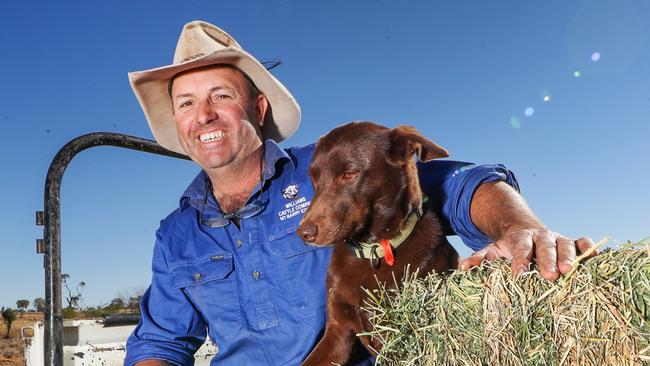How country hardworking dogs have gone from livestock wrangler to top companion choice
While country dogs in drought-affected areas have joined Australia’s long-term unemployed, hardworking hounds are quickly adapting from livestock wrangler to companion of choice.
Pets and Wildlife
Don't miss out on the headlines from Pets and Wildlife. Followed categories will be added to My News.
Working dogs may have joined Australia’s long-term unemployed due to the record drought, but these hardworking hounds quickly adapted from livestock wrangler to companion of choice.
Farmer, dog trainer, TV personality and now youth worker Dave Graham said the drought meant working dogs have not been needed to muster and gather in years.
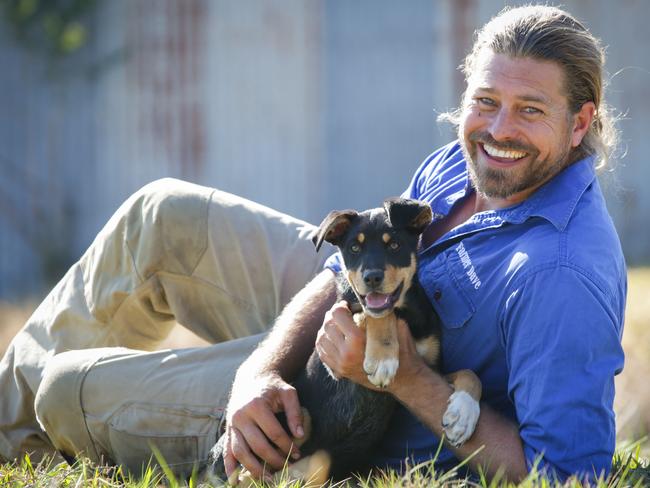
“Livestock aren’t mobile, they aren’t feeding out in free-range paddocks,” Mr Graham said. “So ‘to gather’ – the concept of what the sheepdogs or cattle dogs are meant to be doing – is completely lost during drought times.”
Mr Graham is quick to add, however, all is not lost.
With farmers handfeeding what is left of their livestock, often from a central point off the back of a ute, working dogs are perhaps the only part of a working farm’s ecosystem to have found themselves on easy street.
DOGS OF OZ COMP
Do you have Australia’s Top Dog? Enter here and WIN!
“There’s a lot more dogs in the passenger seat of the ute,” Mr Graham said, adding his father – a farmer of 72 years standing in Goondiwindi, Queensland – previously would have never allowed a dog near the front seat.
“Working dogs (were) no different to the working horses, working motorbikes: you don’t bring (them) into the lounge,” he said.
“But I tell you what, I’ve come home (and) the dog is in the lounge, sitting up there like Jackie watching Sky News.”
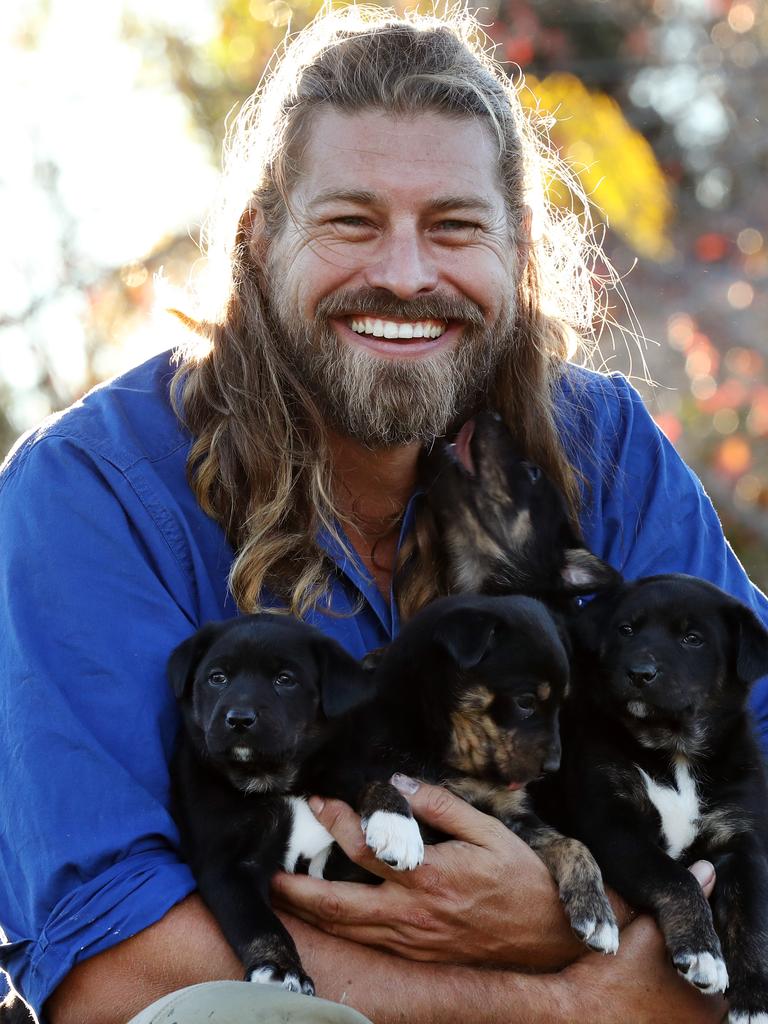
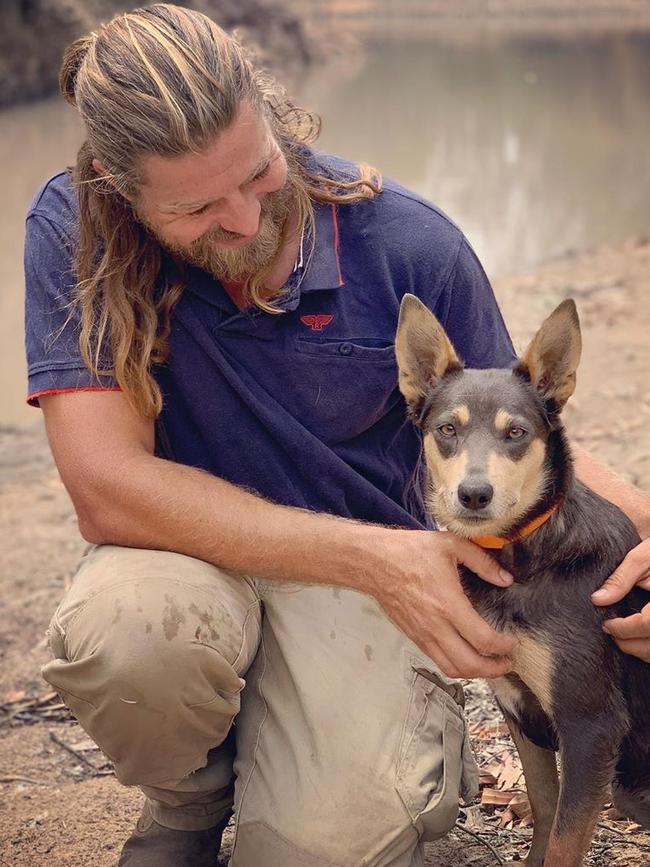
Farmer Paul Dawson said his job would be impossible without dogs, but he shared the view that their role had entered new emotional territory.
“Dogs don’t judge,” he said. “If you’re having a tough time or you’re stressed about the drought, or where you’re going to find money to buy feed next, a dog has that beautiful ability to just come up when you’re feeling a bit down and put his head on your lap.”
MORE DOGGIE NEWS
Drought-stricken farmers finding help from dogs
How to find dog-friendly parks in your neighbourhood
Meet the therapy dog changing stroke victim lives
Mr Dawson chose an interesting time to take on a farm and six working dogs of his own: a 400ha property near Dorrigo in the NSW Northern Tablelands that he bought 18 months ago. Caught up in the widening drought six months ago, disaster struck last September when half of it went up in smoke, engulfed by the Bees Nest fire which started the state’s horror season.
“As a farmer, the first thing you do is make sure your stock is safe,” he said.
“We got evacuated and I didn’t really take much because a lot of things are replaceable, but the one thing I did take was my dogs.”
Despite reports of more working dogs being surrendered in the drought, both Mr Graham and Mr Dawson said their overall value to a farmer is simply too great.

A 2013 study by Sydney University found the typical value of a working dog to its owner is around $40,000 across a 10-year career, translating to a whopping $1 billion estimated contribution to the rural sector.
Indeed, Peri Chappell, co-founder of dog rescue organisation Dogs4Jobs – formerly Herd2Homes – said untrained young dogs and pups were most vulnerable to surrender.
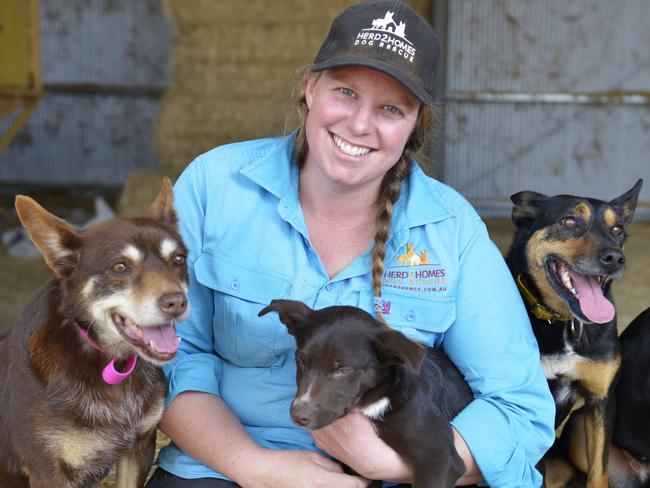
“We’ve only had a handful of trained, broken-in working dogs surrendered,” she said.
“The ones we’ve had a lot of are dogs not yet trained or broken-in, due to time (constraints) with feeding and getting water for stock all day every day, and lack of work (due to destocking).”
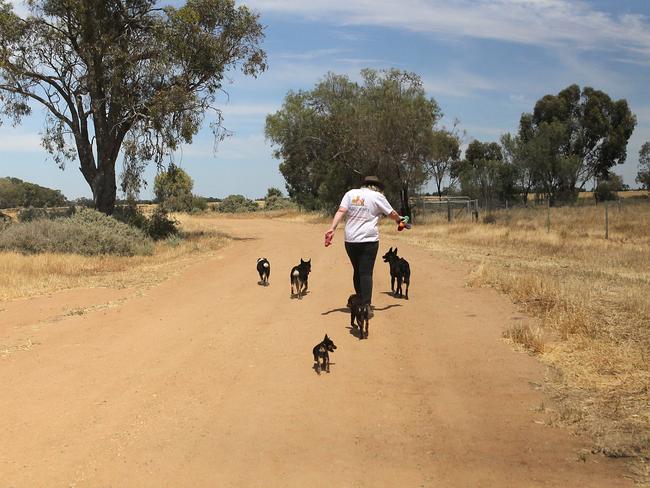
Mr Graham’s new Western Sydney youth program RuffTRACK – based on Bernie Shakeshaft’s award-winning BackTrack model – is designed to empower troubled young men and mend the broken dog line at the same time.
“The boys train top line working kelpies as part of their learning and re-engagement back into society, learning empathy through working with the dogs,” Mr Graham said.
“Then we donate (the kelpies) out to farmers that need a working dog.”
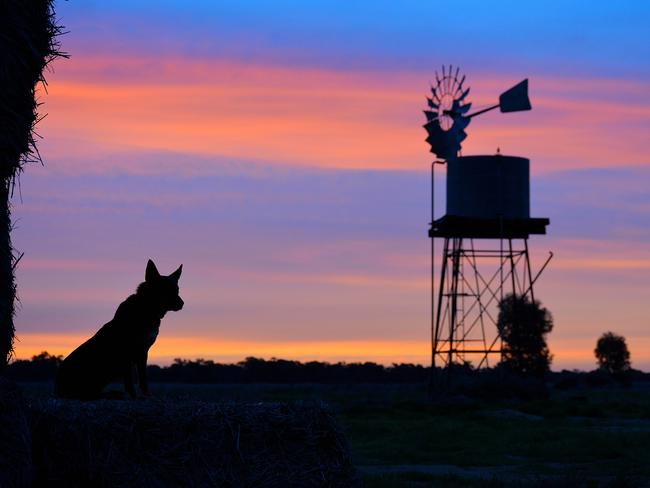
The first round of dog donations is planned for autumn, but farmers reverting to type might take longer. Mr Dawson admitted to letting his dogs sleep in one night and Mr Graham went one better: “They’re the Ginger Rogers to every farmer’s Fred Astaire,” he said.
Originally published as How country hardworking dogs have gone from livestock wrangler to top companion choice

